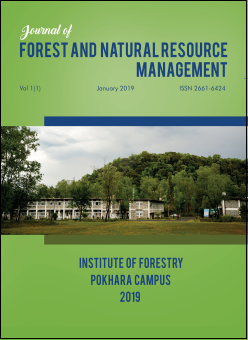Institutional and External Assistance to Cope Climatic Shocks: a case study from Barpak village of Gorkha District
DOI:
https://doi.org/10.3126/jfnrm.v1i1.22650Keywords:
Shocks, climate change, external support, adaptation to shock, Nepal HimalayaAbstract
This paper is based on the case study which was carried out to investigate post institutional and external support to hazard events in Barpak village of Gorkha district. Primary data were collected from household survey where one hundred households were interviewed using structured schedule. An economic stratum of the household was used as variables for the study. Sampled households were categorized into three sub strata i.e. rich, medium and poor. More or less equal number of each stratum participated in household survey. Simple descriptive statistics was used for data analysis where percentage, weighted mean were used to interpret the results. Perceptions of the sampled households were tested with independent chi-square. Result shows that media plays an important role to disseminate about the knowledge on climate change and associated impacts in the villagers. Climate change information, loan as well as donation for coping to climate variability and technical know-how are the major support that people obtained in the village for coping climatic hazards. Poor villagers are almost dissatisfied with almost all supports experiencing while coping against climatic hazards than that of rich and medium strata family of the village.
Downloads
Downloads
Published
How to Cite
Issue
Section
License
© Institute of Forestry, Pokhara Campus




